
This article was updated on September 8th, 2023
As a veterinarian, I see multiple dogs every week with red spots or rashes. Luckily, with a little investigation, we can typically determine the cause and formulate a treatment plan that will have their dog feeling better in no time!
Why did my dog’s skin turn red?
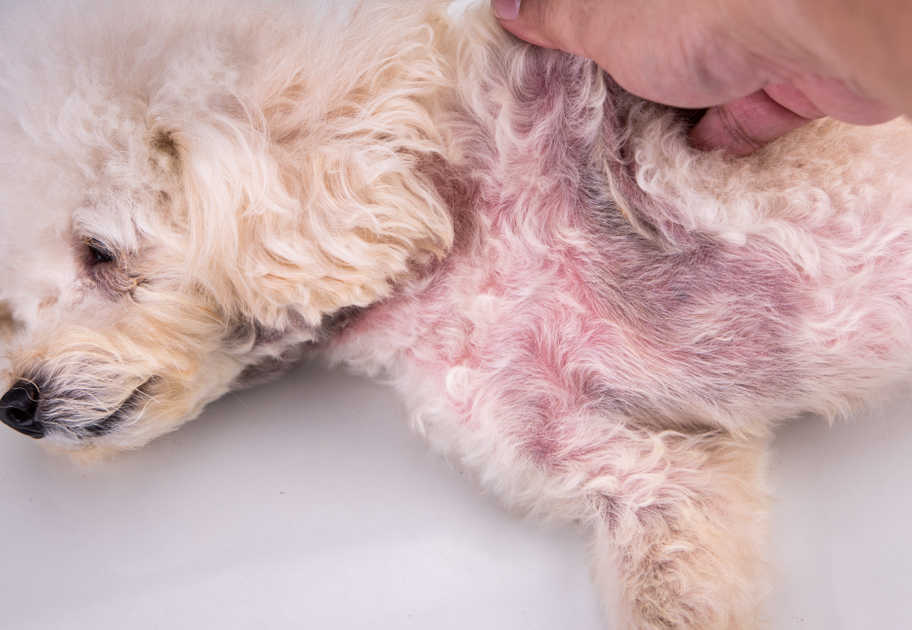
Your dog’s skin may appear red for many reasons. Most commonly, an allergy of some sort is the culprit. This could be a food allergy or an environmental allergy. Other possible causes include parasites, toxin exposure, bleeding under the skin, and autoimmune conditions. Let’s have a look at the top causes, with pictures.
Slide show of red skin issues in dogs
Top causes of red skin issues in dogs (red spots and rashes)
1. Hot spots (moist dermatitis)
Hot spots, technically known as acute moist dermatitis, are red, inflamed areas of skin that can seem to appear overnight. These spots may occur anywhere on a dog but are most common behind and under the ear and on the hips. Though not life-threatening, these lesions can make dogs absolutely miserable.
Typical symptoms include:
- The area will be moist and typically have some purulent oozing.
- Often there is matted fur covering and hiding the hot spot.
2. Red skin issues due to environmental allergies
Allergies to substances in the environment (Atopy/Allergic dermatitis) can manifest as skin lesions in dogs – including red spots or rashes, as shown in the pictures below:
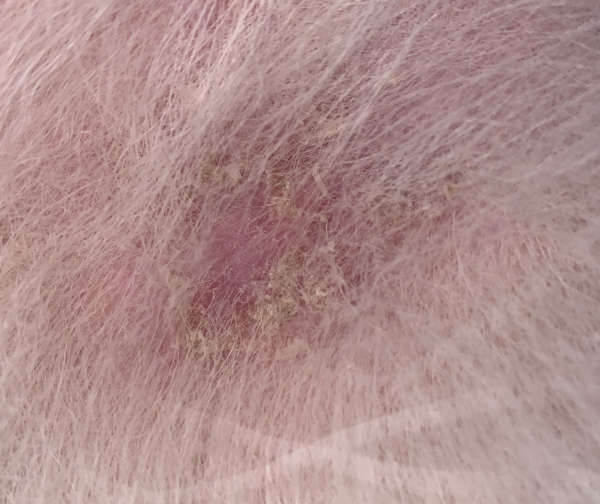
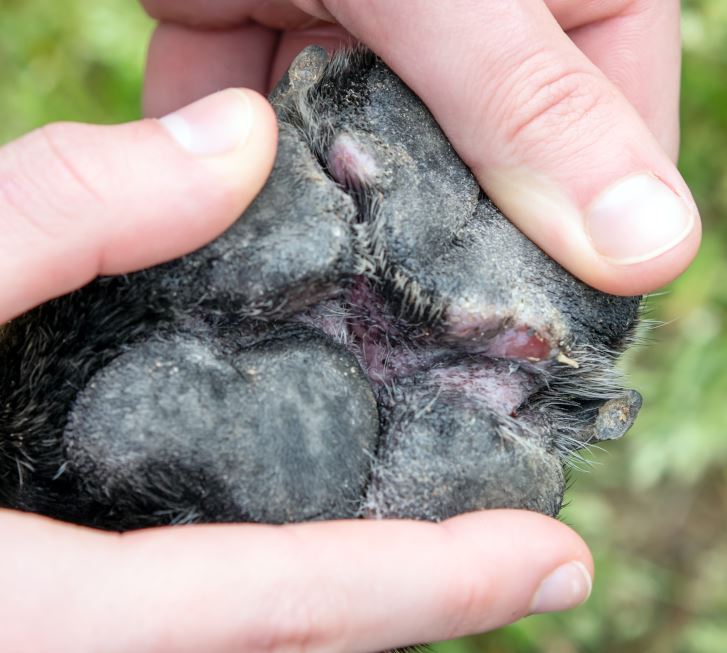
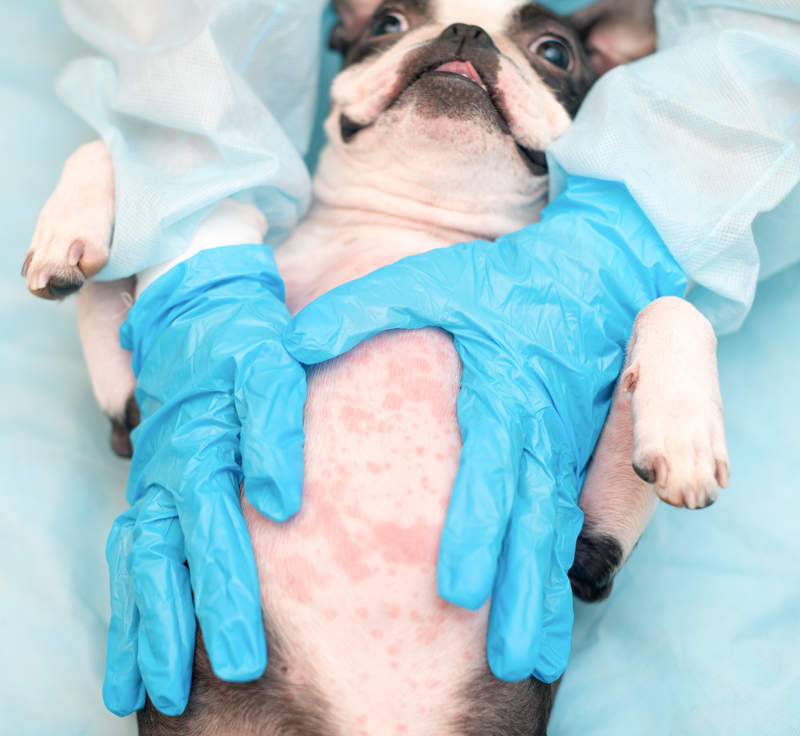
Typical symptoms include
- Redness and inflammation of the skin.
- Hair loss or hot spots on the skin.
- Frequent scratching and itching.
- Watery or itchy eyes.
- Sneezing and coughing.
- Excessive licking or chewing of paws.
- Runny nose and nasal congestion.
- Ear infections or constant head shaking.
These allergies are typically genetic and appear for the first time between 1 and 3 years of age. However, a move to a new area may trigger allergies in an older dog. The signs are most commonly observed seasonally, meaning they come and go throughout the year as the allergens in the environment change.
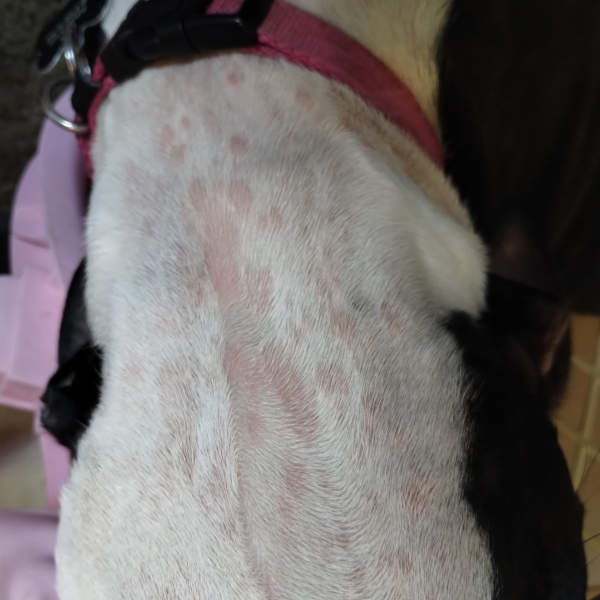
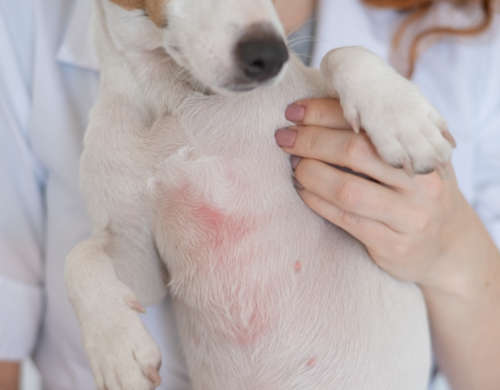
3. Red bumps or rash from food allergies
Food allergies in dogs present differently than environmental allergies. Food allergies tend to manifest as redness or bumps on the dog’s abdomen or gastrointestinal issues such as diarrhea.
Another distinguishing feature is that food allergies tend to occur year-round, in contrast to atopy, which is typically seasonal.
Typical symptoms with food allergies:
- Redness or inflammation of the skin / red bumps
- Itchy skin, especially around the face, paws, and ears.
- Recurrent ear infections.
- Gastrointestinal problems such as vomiting, diarrhea, or excessive gas.
- Poor coat quality or excessive shedding.
- Chronic licking or chewing of paws or other body parts.
- Swollen or inflamed paws.
4. Red rashes & hair loss from Mange (dog mites)
There are two main types of mange that affect dogs, demodectic and sarcoptic. Demodectic mange is caused by the Demodex mite and most commonly causes patchy hair loss in younger dogs. This condition is not itchy and not contagious. Sarcoptic mange, caused by Sarcoptes mites, is very itchy and is contagious to both other animals and humans.
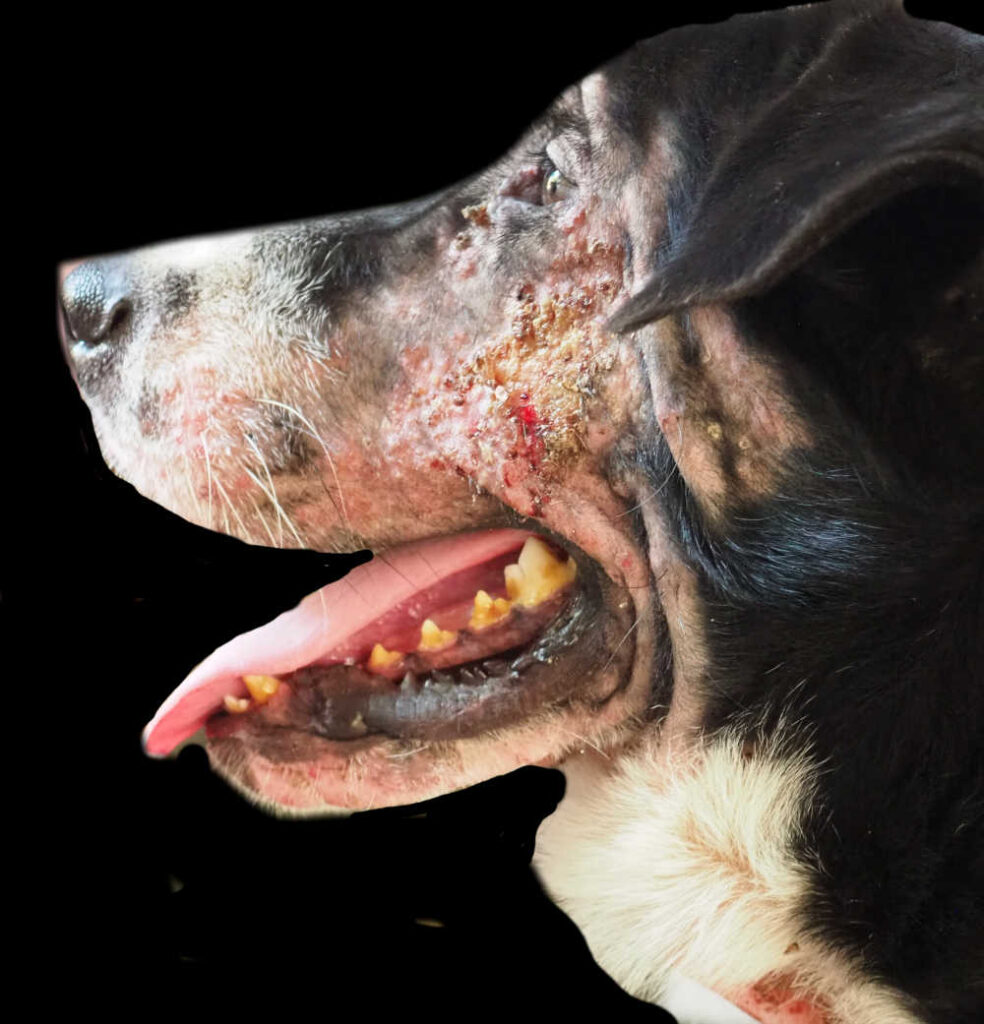
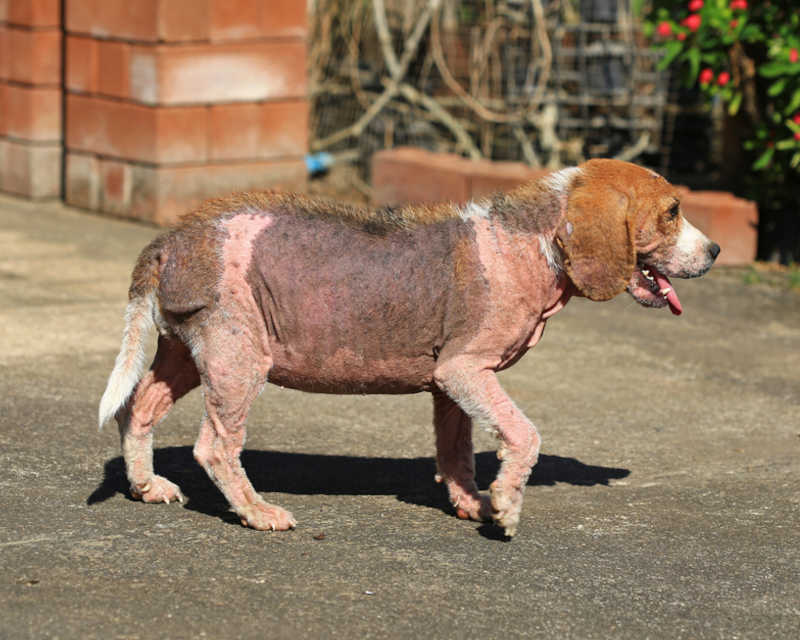
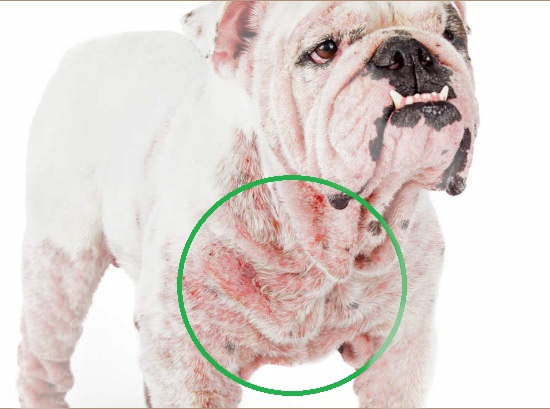
Typical symptoms include:
- Redness, inflammation, and thickening of the skin.
- Intense itching and scratching.
- Hair loss, typically starting around the face, ears, and paws.
- Formation of scabs, crusts, or sores on the skin.
- Presence of mites or their eggs on the skin or in fur.
Diagnosing mange in dogs involves a veterinarian scraping the hair follicles and examining the scraping under a high-power microscope. Demodex mites are fairly easy to find, while Sarcoptes mites may not be seen. Treatment will include medications to kill the mites, as well as antibiotics for secondary infections and pain. Costs vary from $100-$300.
Mange must be diagnosed and treated by a licensed veterinarian. Home remedies are dangerous and ineffective. Learn more about Mange (Dog Mites).
5. Red skin issues from bacterial infections
Bacterial infections often cause redness, pustules, and discharge. You may also notice your dog itching, chewing, or excessively licking. In the picture below, a bacterial infection caused redness (erythema), crusts, scaly flakes, and mild hair loss. Learn more about bacterial infections in dogs.
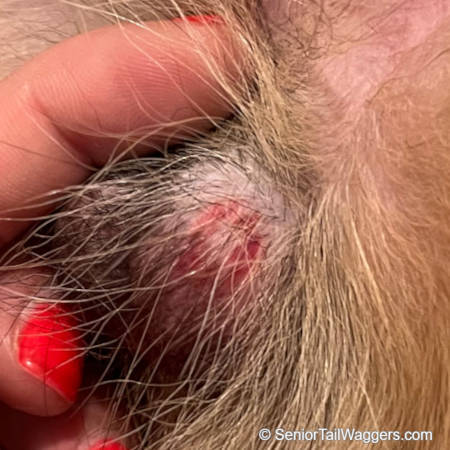
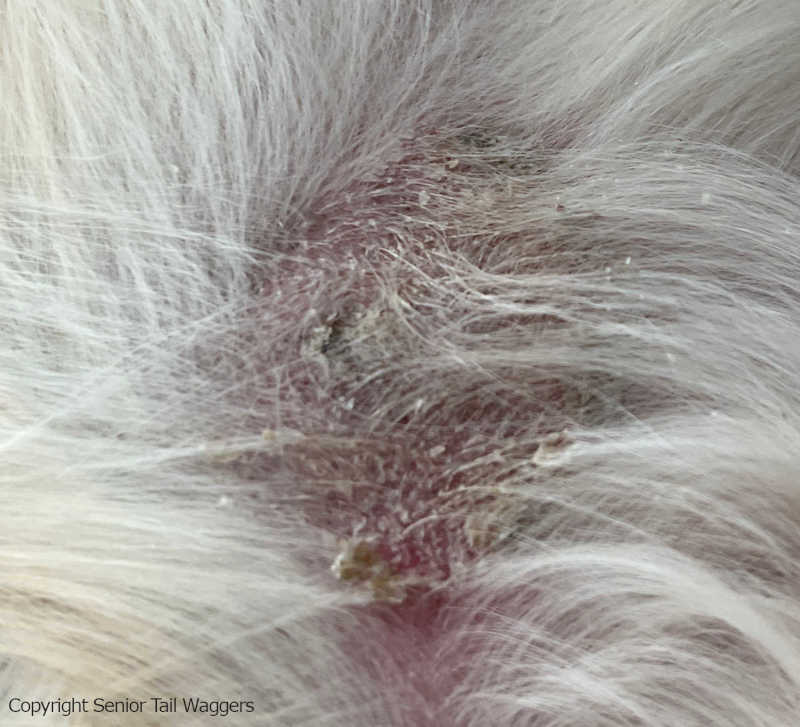
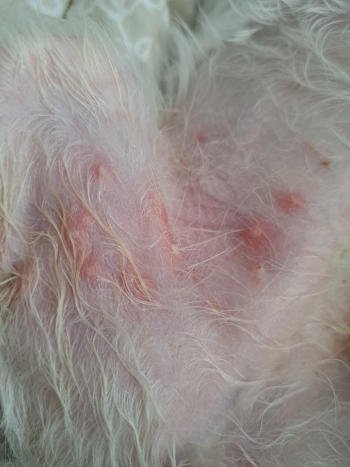
6. Ringworm’s red spots
There are multiple fungal infections, but the one that worries most pet owners is ringworm (caused by Microsporum species). Despite the name, ringworm is not, in fact, a worm. Ringworm is a fungal infection that is contagious between animals and humans. The lesions are typically red, and circular and lose hair in a concentrical widening outwards. The very outer ring is often scaly. Dogs may have one lesion or up to hundreds. Learn more about Ringworm (Pictures & Treatments).
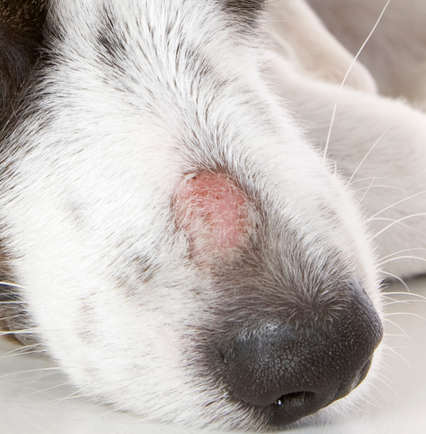
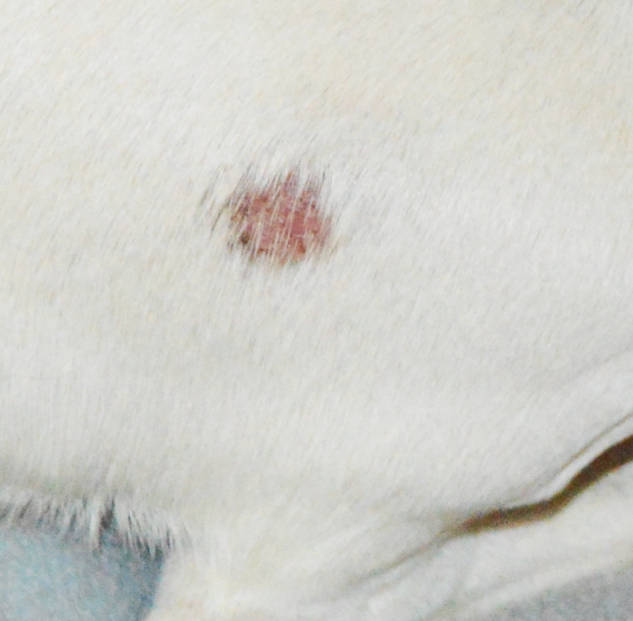
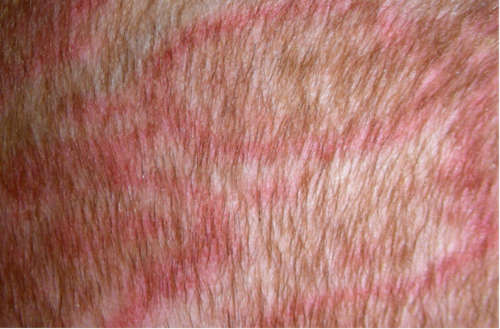
Related post: skin infections in dogs.
7. Other common causes of red skin issues or rashes in dogs
Dogs can develop a red rash on their skin through allergic reactions or irritations caused by direct contact with substances like chemicals or herbicides. These agents can disrupt the skin’s protective barrier, leading to inflammation, redness, and discomfort, known as contact dermatitis, as shown in the picture below.
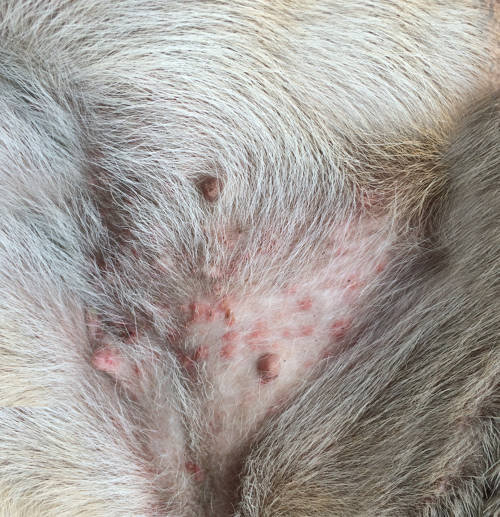
Dogs who are having an issue with blood clotting, whether from exposure to a toxin such as rat poison, or due to an autoimmune disease, may bleed into the area under the skin. These lesions are classified by their size and appearance but can appear as small red spots under the skin, as shown in the picture below. This condition is always an emergency and the dog should be taken to a veterinarian urgently.
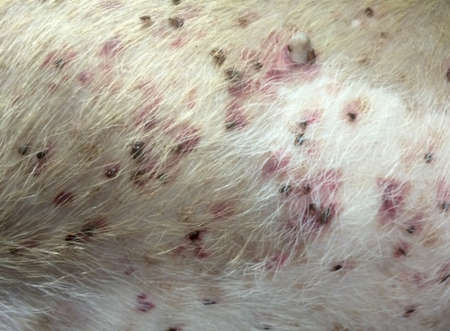
Related post: Best Creams and Home Remedies for a Red Rash on a Dog
Signs that your veterinarian needs to look at your dog
If your dog has red skin, they are likely uncomfortable. Allergies should be addressed with your vet as soon as possible, but are not typically an emergency. An exception would be an anaphylactic allergic reaction where the dog has hives, facial swelling, and difficulty breathing. Bleeding under the skin points to a serious health issue and is always an emergency.
How much will it cost to diagnose a red skin issue at the vet?
Because the possible causes of red skin in a dog vary widely, the costs for diagnosis do as well. Your dog may require a simple examination and consultation along with medication or a food trial. Others may require allergy testing, blood work, skin scrapes, cultures, and other diagnostics to pinpoint the root causes of their red skin. Costs will typically range between $100-800, but are highly variable.
Related post: pictures of 21 common dog skin issues in dogs.
Disclaimer: This website's content is not a substitute for veterinary care. Always consult with your veterinarian for healthcare decisions. Read More.



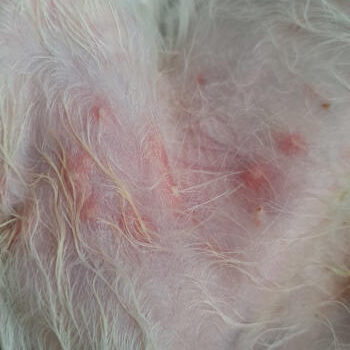
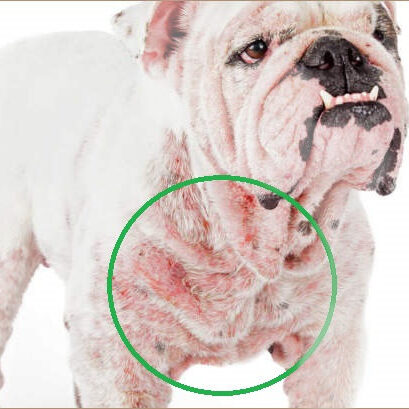
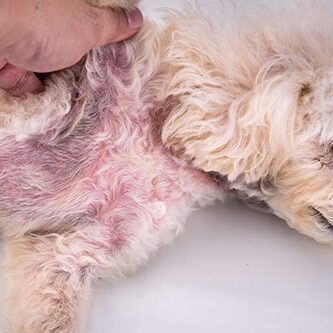

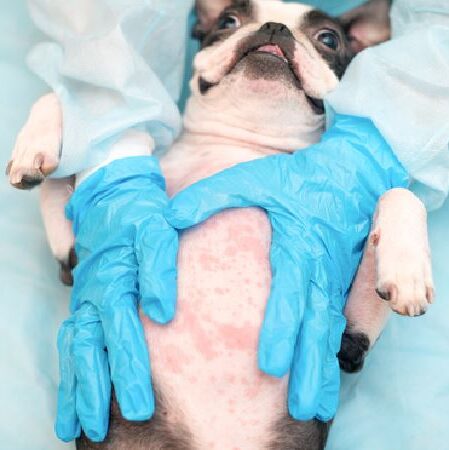
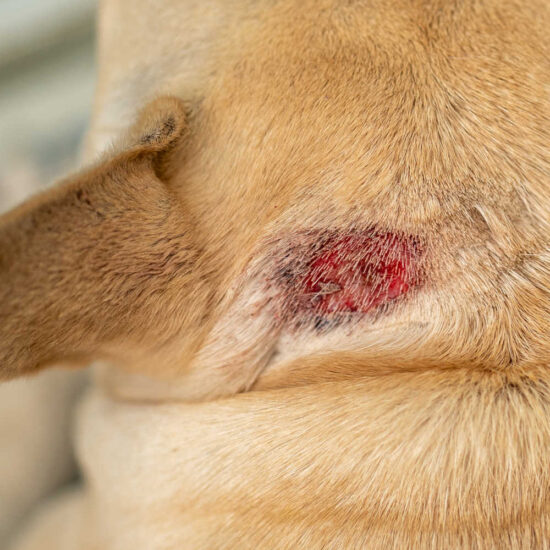
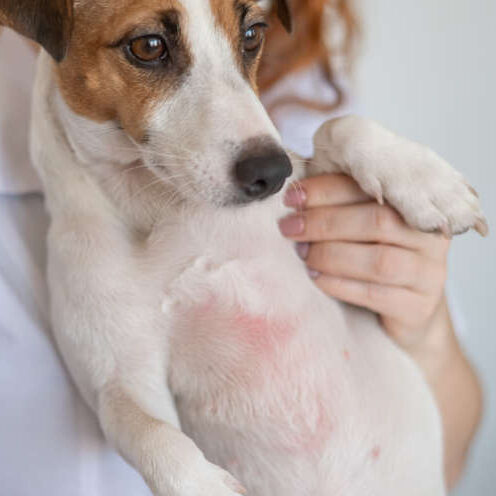
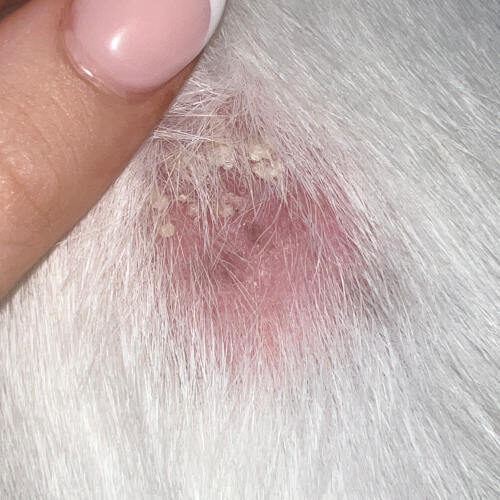
This is the best website I have seen for skin infections on dogs. Photos are a big help and need to be updated if you find a ‘model’ with less hair covering the symptom. Thanks though for a good job.
This web site is very informative on the subject and is really a one stop place for finding out about your dog’s allergy!
How to treatment this type of issues in dog
Hey Anthony and thanks for your question. If you read the article, you should see the treatment recommendations under each section. How we treat the patient does depend on the cause of their red skin. It is sensible to have your dog seen by their vet, should be able to get a clearer idea of what is going on with your dog. They’ll take into account their age, breed, medical history and the appearance of their skin. They may also recommend some tests (such as a skin swab, scrape or allergy bloods), to help figure out why their skin is inflamed. We do also sometimes advise ‘medical trials’, meaning we issue medicine to see if it helps- which also provides us with information as to what is going on.
“The information on this website is not a substitute for in-person veterinary care. Always seek advice from your veterinarian if you have concerns about your pet’s medical condition.”